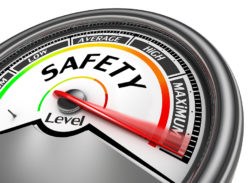How to Measure Workplace Safety Performance
When it comes to your workplace safety performance, it is essential that you know where your company stands. Before you can measure the effectiveness of your safety performance, however, you need to know how to measure it.
The first thing you need to do so that you can properly measure your company’s safety performance is to assess how your company has performed in the past. For example, you need to know how many injuries have been reported and the severity of those injuries; the number of days workers have missed because of accidents and injuries; and your workers compensation costs.
While measuring your safety performance will tell you how many people got hurt and how badly they were hurt, it won’t tell you much of anything else. That is why you also need to measure what your company is currently doing to help prevent accidents and injuries. For example:
- How much and what type of safety training is offered?
- What problems have been identified and corrected?
- How have risk factors for accidents and injuries been reduced?
- Do employees say that they feel safe at work?
- What are the results of any current safety audits?
When you measure what your company is doing to make the workplace safer, you are better able to see even the slightest improvements in safety performance. This allows you to put more emphasis on the positives aspects of your safety efforts as opposed to just focusing on the negative. This allows you to ultimately increase workplace safety by being more proactive.
When tracking safety, it is important to understand both your past and current performance records. This will help you to get a clearer view of the state of your workplace safety efforts. You need to track things like how much safety training is offered and how many employees attend safety meeting meetings. These facts will help you to understand how those measurements are impacting workplace safety. Only then will you get an accurate feel for how you are actually doing in terms of workplace safety.
While safety tracking, safety audits and safety training can seem like a lot of time and effort, in the long run it will pay off in a variety of important ways. These include a decrease in accidents, greater productivity and lower workers compensation claims.

